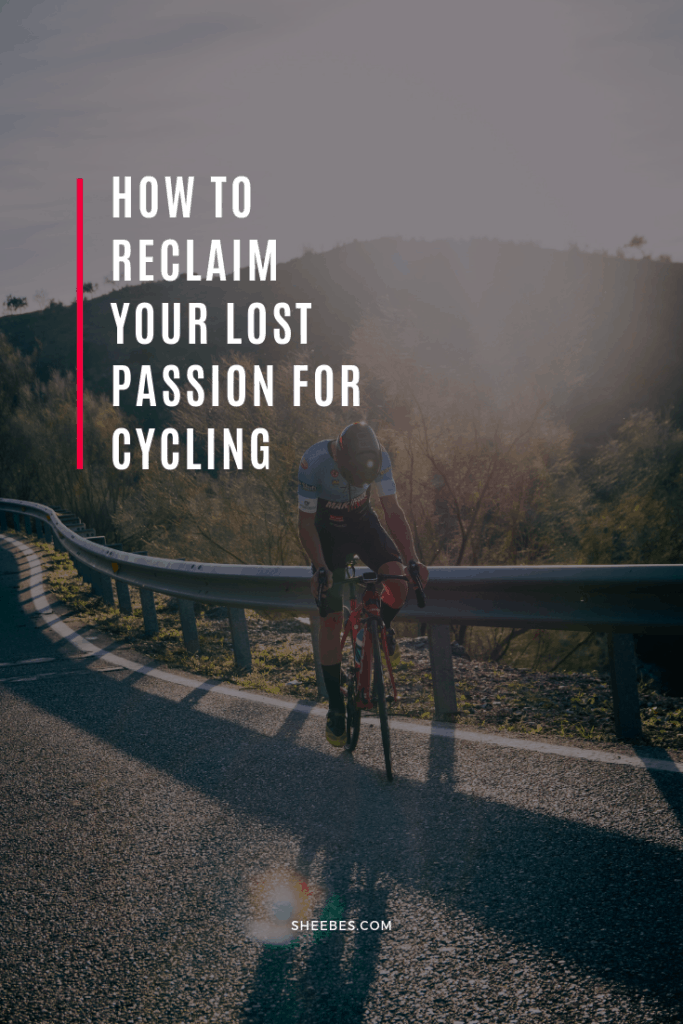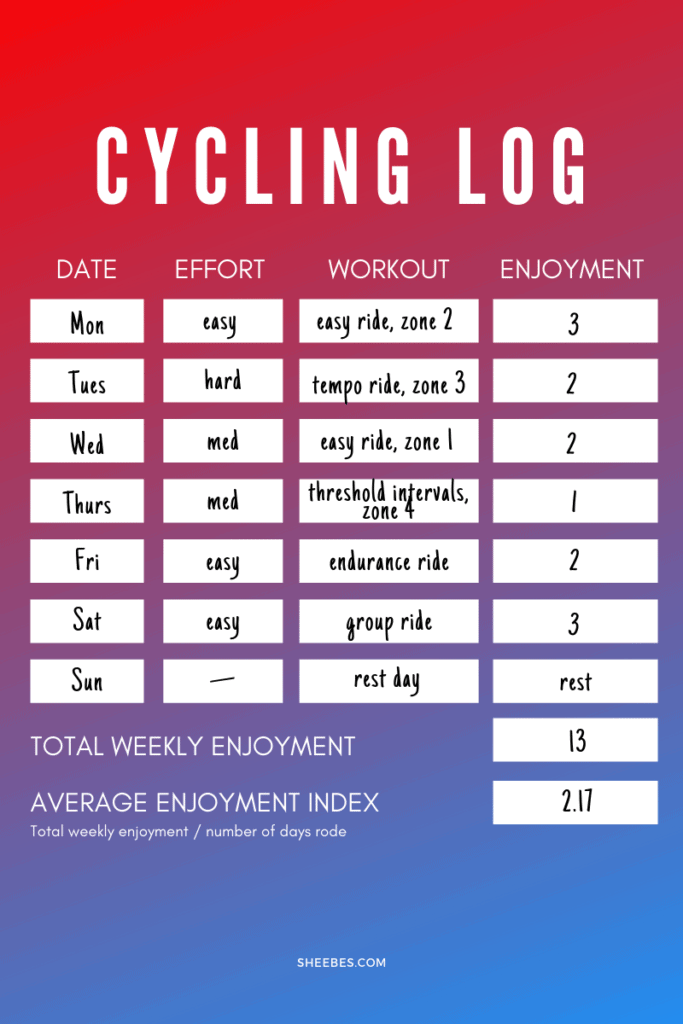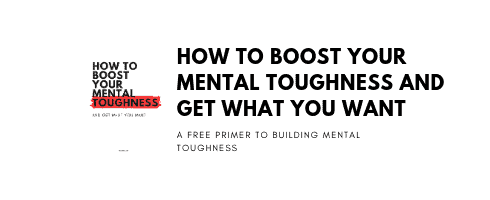Remember when you first starting cycling? It was a thrill getting a new bike and the gear to go along with it.
Fast forward to today. You’ve lost your passion for cycling. And getting ready for a ride seems more hassle than it’s worth.
But before you hang up your wheels altogether, you’ve got to know this: it’s totally normal. It doesn’t matter if you’ve been cycling for a few months, or for years, boredom sneaks up on you and won’t go away.
But there are 2 fixes you can use today to help you get that spark back into cycling again, if you decide to stick with it.
Welcome to Sheebes—the site that’s here to help you build your mental toughness and pursue new personal records.

Sheebes is here to give mental toughness tips and resources to help you, the endurance athlete, achieve your personal best. To keep the lights on and content free, we are a participant in the Amazon Services program and other select affiliate networks. This means if you click on an affiliate link below, Sheebes will earn a small commission, at no cost to you.
2 Tips on How to Get Your Cycling Passion Back


Hide your Garmin to reclaim your lost passion for cycling
Too often we become slaves to the numbers—the number of miles ridden; how fast we’re going; or race placement.
This pressure can suck the joy out of cycling and we forget that cycling isn’t solely about distance or power output. Instead, it’s about the mental clarity after a good ride, the feeling of freedom, or the opportunity to catch up with friends on a group ride.
A fix? Leave the Garmin at home. Well, maybe not at home, because Strava. At least, stick it in your jersey pocket so you can still have your data but it’s not staring at you the entire ride.
There is one important thing to consider if you ride without looking at your numbers.
And it’s that you learn to ride by feel instead. Without data, you must pay attention to other cues such as effort and feel. Because your body tells you everything you need to know to enhance your performance, if you listen to it.
It’s a powerful way to monitor fatigue and improve your cycling. And you won’t be glued to your screen to tell you how hard you’re pushing.


Lost your passion for cycling? Gather data on your cycling enjoyment
If you’ve lost passion for cycling, it’s a clear sign something isn’t working. After all, we love to do things we enjoy and avoid things we don’t.
And if you’re at the point where you’ve lost passion for cycling and want to bring the fun back, then you’ve got to gather data on your riding enjoyment.
There’s one way you can pinpoint your enjoyment, thanks to Matt Fitzgerald, author of RUN: The Mind-Body Method of Running by Feel. Yes, this book is for runners, but this particular tool can be invaluable to you as a cyclist, especially if you’ve lost all enjoyment for cycling.
Here’s what he recommends.

After a ride, give it a score of 1, 2, or 3 (1 = mostly unpleasant; 2 = there was an equal number of pleasant and unpleasant moments; 3 = mostly enjoyable)
You must score every ride for the most accurate data. It’s important to be as specific as possible. Note the specific things that made it either pleasant or unpleasant. Was it an easy ride on a new route you enjoyed? Do you hate cycling when it’s hot? Whatever you liked or disliked about a ride, write it down.
After you’ve scored and detailed every ride in your week, total your weekly enjoyment.
For example,
Your total weekly enjoyment = 13
Then, divide your total weekly enjoyment by the number of days ridden (6 days), 13/ 6 = Average enjoyment index 2.17.
Conclusion? It was a pretty neutral week, with an equal number of pleasant and unpleasant moments.
Next week might be more enjoyable than this week, but you must stay on top of your enjoyment levels to know for sure. And the more consistent you are with this, the more insights you’ll have on what peaks your enjoyment levels (maybe it’s the slow and steady long rides?) and what brings it down (maybe it’s intervals?).
Another interesting thing about keeping an eye on your enjoyment levels is that it’ll track the answer to this very question: Did this ride match your expectations?
This is important because it has a sizable impact on your cycling enjoyment.
How would you feel if you were told to hammer it for 10 minutes and at the end of 10 minutes (when you thought your workout was over), you were told to continue for another 10 minutes? I bet you’d feel pretty angry.
And that’s what this study by Ross Tucking of the University of Cape Town in South Africa proved in a study with runners.
Runners ran on a treadmill for two separate moderate-intensity runs.
In the first treadmill run, runners ran for 10-minutes and rated their perceived exertion (RPE) every minute. When runners thought they completed their run, they were told to run for another 10 minutes.
The result? A spike in exertion in the 11th minute.
In the second run, runners ran for 20 minutes. This time, there was no spike in effort at any point even though runners were cycling for the same total time as the first—20 minutes.
The difference? Runners knew beforehand what to expect—a 20-minute run—and this workout met their expectations.
Runners thought the first workout was harder because it didn’t match their expectations.
What does this mean for you as a cyclist?
When you expect a ride to hurt and be painful, you might enjoy that workout more because it lives up to your expectations.
One last thing…
Heading out for a ride doesn’t have to fill you with dread.
Before you give up on cycling, try two things: hide your Garmin and track the data on your enjoyment levels. You’ll ease the pressure of having to ride at a specific level. And, you’ll hone in on the aspects of cycling you truly enjoy.
